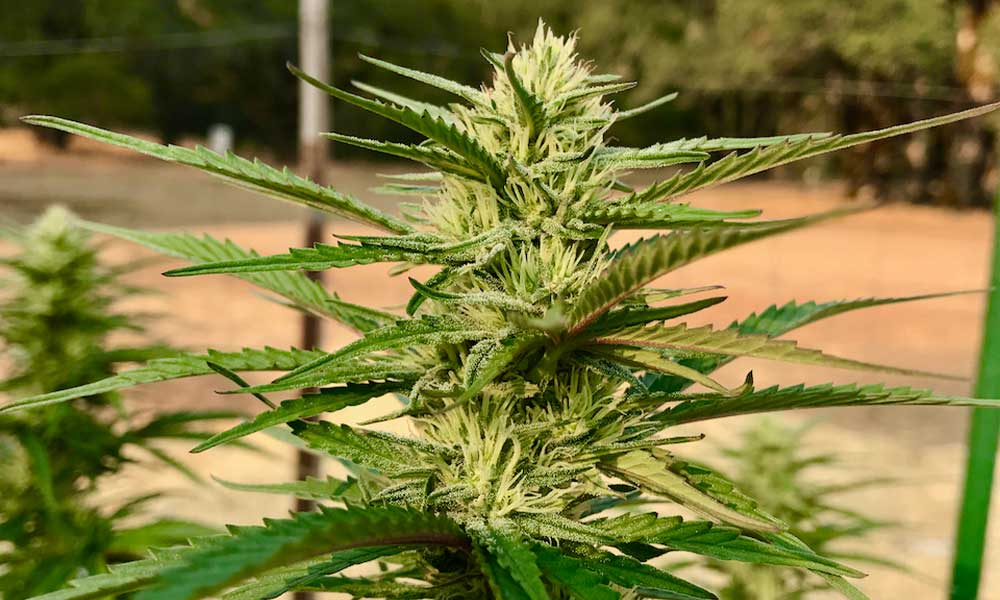
Cultivation
How to Prepare Cannabis Plants for Harvest
Swami of Swami Select shares tips on how to get ready for harvesting cannabis outdoors.


Swami of Swami Select shares tips on how to get ready for harvesting cannabis outdoors.
Once the “girls” in the garden begin to cluster up to become flowers, it’s time to think about harvest. Up here in the Mendocino Highlands, that change in the plants usually starts at the end of July or in the first week of August, depending on the cultivar. In this article, we will review how to prepare cannabis plants for harvest time.
One of the first things to do when preparing cannabis plants for harvest is to alter the compost tea brew. We do this by decreasing the nitrogen containing ingredients and increasing the phosphorus containing ingredients to arrive at a 50/50 ratio for several feedings. Then, as the days go on, reduce the nitrogen factor even more and increase the phosphorus factor. More nitrogen is needed for vegetative growth and more phosphorus is needed for flowering or fruiting. The potassium needs are more or less constant throughout the plant’s life.
If there is a great deal of heat at the end of summer, keep supplying plenty of water through August. But in early September, it is good to cut back on the water, which along with the increasing nighttime hours, signals the plant to finish its growth and put the energy into the flowers and seeds.
It’s a time to be extra vigilant, because once the female plants notice that there are no longer any male plants in the garden, the drive to reproduce can cause hermaphrodite, or male branches to develop. These trans individuals need to be removed or cut off immediately because they could seed the whole garden. Vigilance extends to daily monitoring each plant for pests and pathogens right up until harvest. The threat of these plant enemies increases as it gets closer to cutting—some only reveal themselves on the mature plants.
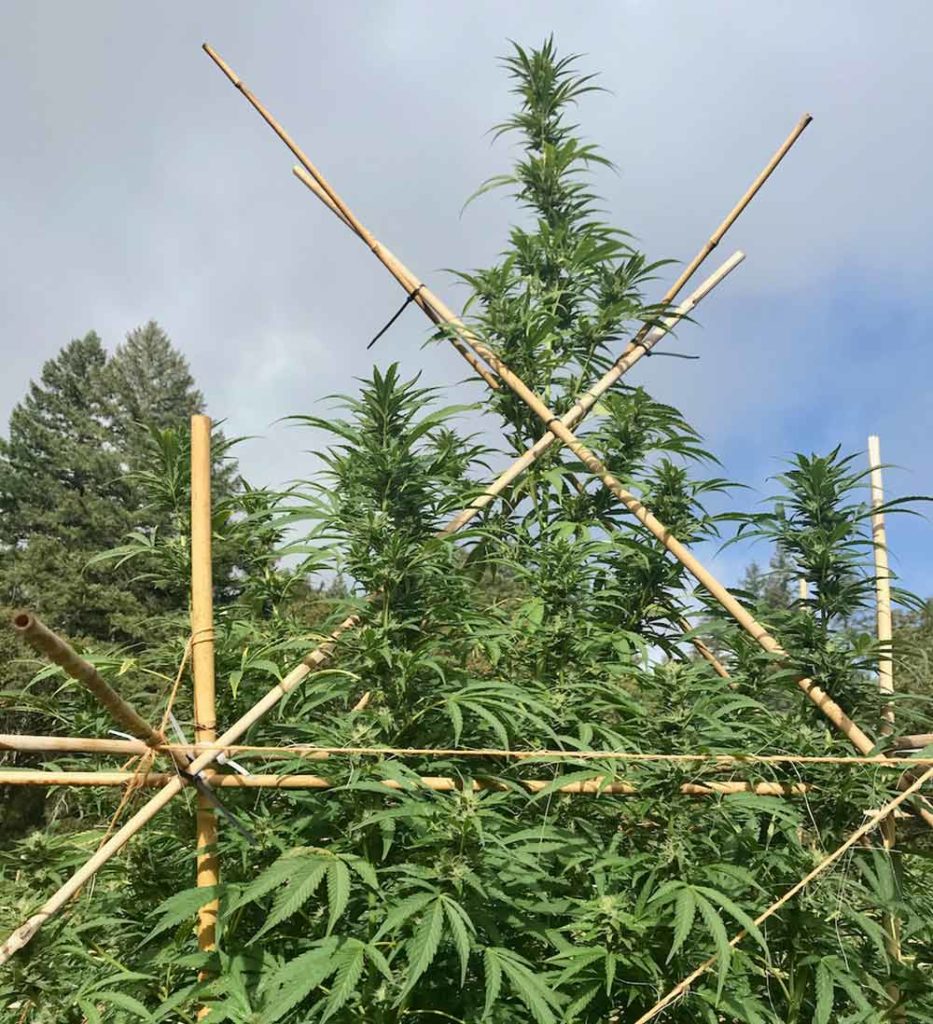
Trellising is another major part of preparing cannabis plants for harvest. The branches are getting longer, and as the buds get bigger, the branches get heavier. Come a heavy dewfall, fog in the early morning, or even rain, the lower branches are at risk of breaking off. There are many methods of trellising, depending on the size of the plants, and each farmer has his or her preferred method.
We use green, plastic-coated 8-foot metal poles for the verticals, which can be reused for many years. The horizontals are bamboo, five or six feet long. They are held on with high-test nylon zip ties. If they are kept dry during the winter, the bamboo poles can also be reused for many years. We dip the bamboo in dilute hydrogen peroxide in August to disinfect them before attaching them to the verticals.
Many people use monofilament line or nylon twine netting strung horizontally from “T” posts (a metal fence post) to hold up the branches. I prefer not to use the netting because in order to harvest cannabis, it usually needs to be cut away, producing a lot of waste, which means you only get one year out of it. Others use “T” posts and actual fencing, or even the woven wire mesh used to reinforce concrete sidewalks.
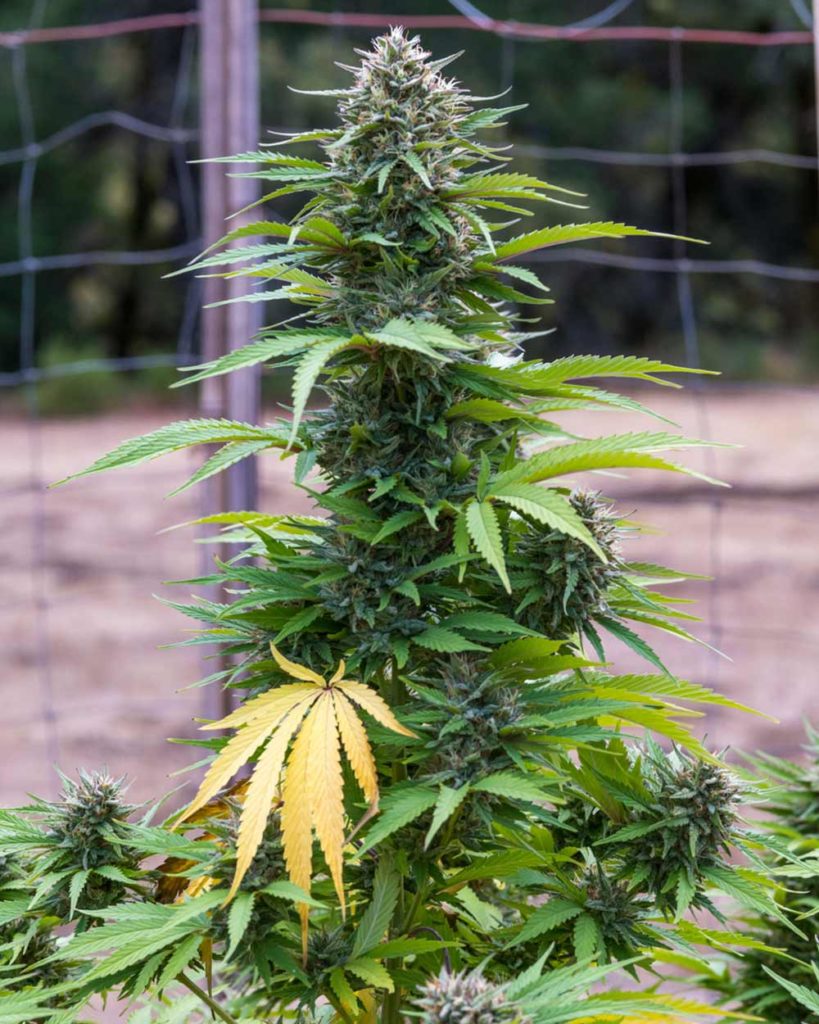
As watering is cut back, the big fan leaves on most plants will turn yellow. Some people leave them on, but we snap them off to allow more airflow and give more energy to the plants. After yellowing, the leaves will brown and become crispy. But if there is heavy dew fall or rain, the brown leaves will absorb water and become soggy, possibly leading to PM or mold.
As it gets closer to cannabis harvest time, we continue “yellow leafing” and begin to remove some of the large fan leaves even if they are not yellow. On the day before cutting, we often remove most of the big leaves because it helps the drying process and is easier to do while still on the live plant.
Simultaneous with these operations, late August into early September is the time to prepare the drying space. We have a large wooden barn in a Douglas-fir forest for this purpose. Wooden buildings, in my opinion, do the best job of drying, kind of like a giant oak wood barrel for wine.
Whatever the space, it needs to be emptied out and thoroughly cleaned. If there have been any problems with mold or other contaminants in the past, a total disinfection might be necessary. Spraying dilute hydrogen peroxide or diluted bleach are options.
Fans and dehumidifiers need to be checked, repaired or purchased, along with thermometers and hydrometers for monitoring temperature and humidity. Windows need to be covered with black plastic, and the system for hanging the plants must be checked, repaired or installed. Keep in mind that it takes nearly as much space to hang cannabis to dry as it does to grow it.
Late August is the time to order cannabis harvest supplies: storage tubs, rolls of brown paper, marking pens, masking tape or labels, packaging tape, scissors, headlamps and batteries, sanitary gloves, pruning shears, zip ties and anything else needed for harvest, such as tarps or buckets for transporting harvested plants. And, if you are a licensed grower in California, you need to get the County Ag Commissioners Annual Seal for your weigh scales.
Now that you know how to prepare cannabis plants for harvest, stay tuned for our next post in which we will review how to harvest and hang your crop.

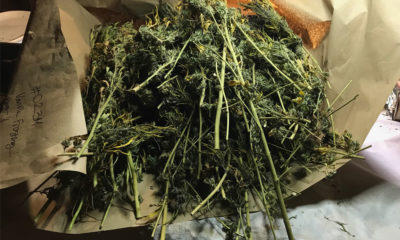
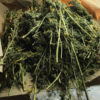
Keeping a close eye on your cannabis after harvest is critical to ensuring optimum quality by...
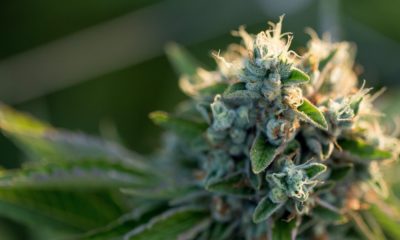

From the sight, smell and taste through to up-close inspection for pests and mold, follow this...
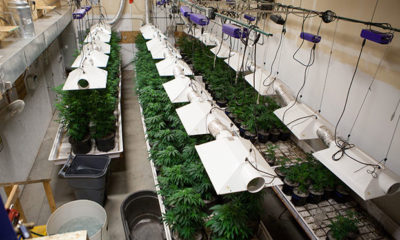

Learning about the pH of your nutrients can be a huge step in the production of...

